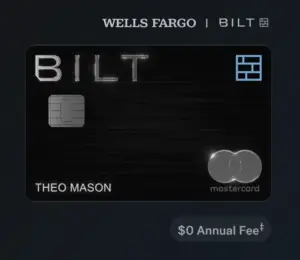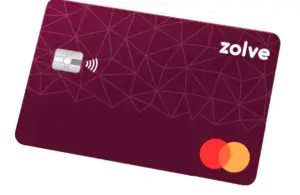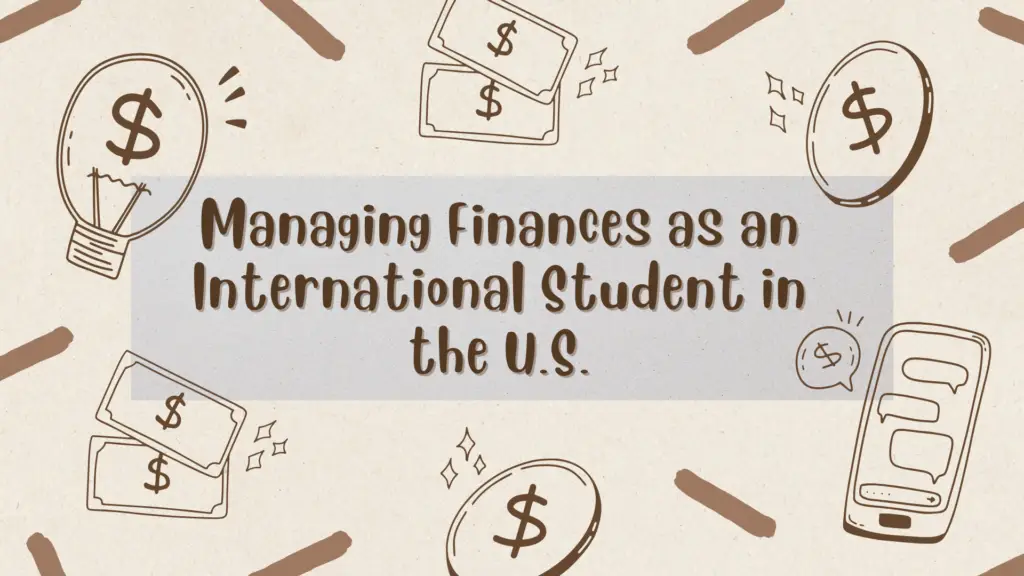The Financial Journey Begins: A Personal Hook
When I first arrived in the United States, I carried not just my luggage but also a financial commitment: a loan. My plan was simple: secure a good job and gradually repay my family over the next few years. Managing money smartly from day one was critical, as every expense needed to be accounted for. Over time, I learned to balance my finances, making strategic decisions about credit cards, savings, and living expenses. This blog is about those experiences and how you can navigate your financial journey as an international student.
1. Opening a Bank Account as a Student
When I arrived in the U.S., I researched which banks offer free student bank accounts. As an international student, opening a current bank account is essential. Among the most popular choices for Columbia students are Chase and Bank of America, both of which provide student-friendly banking options.
Another great option is Santander Bank, which also has favorable student banking features. However, I personally chose Chase because their branch was right in front of my house, making it convenient for in-person banking whenever needed.
My experience with Chase has been smooth. All transactions are seamless, and Zelle, a widely used digital payment platform, is integrated within the Chase app. This makes it easy to transfer money to friends or pay bills, similar to how Paytm and Google Pay work in India. Venmo is another commonly used peer-to-peer payment platform in the U.S., but I prefer using Zelle because of its direct integration with Chase.
Later, I also opened a savings account with Chase. While the interest rates are low, I did it to have two parallel accounts that I could switch between based on my financial needs.
2. Managing Finances in the First Few Months
When I landed in the U.S., I had no prior experience with credit cards, not even in India. I initially took a Zolve credit card before moving, but looking back, I feel it wasn’t necessary. If you have an international credit card, you don’t need a Zolve card. Instead, I recommend that new students apply for a credit card after arriving in the U.S.
For those arriving in August, many banks have partnerships with universities. Bank of America, for example, offers credit cards to students with no credit history. By showing your I-20 and college documents, you can receive a credit limit of $500-$600, even without an SSN (Social Security Number). If you have an existing credit history in India and can prove it, you might qualify for a higher limit.
However, I didn’t opt for Bank of America’s credit card as I already had one from Zolve. But in hindsight, the BOA credit card is a great option for international students without SSNs, unlike most U.S. credit cards that require one.
3. The Struggle for an On-Campus Job in the First Semester
I didn’t get an on-campus job in my first semester, despite multiple inquiries. If you’re attending a campus town university (like UIUC, Tufts, or Dartmouth), you’ll have a much higher chance of securing multiple on-campus jobs. In contrast, city universities (Columbia, NYU, USC) have fewer student jobs available due to external hiring options.
By the time my junior batch arrived at Columbia, I ensured they had the right contacts to land on-campus jobs early. The key takeaway? Networking is everything when securing campus jobs.
4. Why Having a Social Security Number (SSN) is Important
A Social Security Number (SSN) is not just for getting a credit card, it is an essential requirement for working legally in the U.S. Whether it’s an on-campus job or an off-campus opportunity, having an SSN is mandatory for employers to process official work documentation. Any work done without an SSN can lead to legal consequences.
Additionally, an SSN allows you to apply for some of the best credit cards in the U.S., such as:
American Express Gold
Discover Credit Card
Chase Sapphire Preferred
Chase Freedom Unlimited
BILT Credit Card




5. Managing Expenses with Credit Cards
Once I had my SSN, I started building my credit history. My first credit card was the Discover Credit Card, which I found to be the best for paying for groceries. Discover offers quarterly discounts on select spending categories, making it a great card for maximizing savings.
After four months of using Discover, I applied for the American Express Gold card. However, Amex Gold is difficult to get without a strong credit history. If you have no prior credit history, you might get rejected. I highly recommend applying for this card only once you have a good credit score and repayment history.
One of the most useful credit cards I use is the BILT Credit Card. The reason I prefer BILT is that it allows me to pay my rent while earning rewards, something most credit cards don’t offer. Rent is a major expense for students, and using BILT ensures I get some cashback and benefits out of it.
BILT also frequently offers promotional tie-ups with brands like Uber, Lyft, Apple, and Amazon, providing cashback opportunities and deals. While the cashback might seem small, over time, it adds up—for instance, if I pay $1,300 in rent, I get around $13 cashback, and if I cover my full apartment rent of $4,000, I get $40 cashback. In a city like New York, $40 can cover several meals, making it an easy way to save money on necessary expenses.
However, BILT is not the easiest credit card to get. Many of my friends got rejected when they applied without an established credit history. I highly recommend applying for BILT only after you have built a strong credit score with other beginner-friendly cards like Discover or Bank of America credit cards.
6. Investing with Robinhood
In my final fall semester, I started using Robinhood as a way to invest in small amounts and save for the long term. As an international student, trading cannot be a full-time activity, and frequent day trading is legally restricted.
To stay compliant, I invested only in long-term equity holdings and bought small shares of different companies whenever I had savings. This approach allowed me to grow my money slowly without making investing my primary focus. Robinhood has become one of the ways I save and diversify my finances in the U.S.
7. Fall Semester: Second On-Campus Job & Better Financial Management
By September of the second year, I secured my second on-campus job as a Technology Consultant at SIPA (School of International and Public Affairs). With better earnings, I could allocate money towards rent, road trips, credit card bills, and exploring NYC.
By this time, I had mastered financial management—balancing expenses, paying off bills, and maintaining a steady budget. My experience taught me that the key to financial stability as an international student is a mix of smart spending, leveraging on-campus jobs, and networking.
Looking Ahead
Managing finances as an international student can be challenging, but with careful planning, strategic choices, and networking, you can thrive financially while enjoying the journey. If you have any questions or want referrals with great joining bonuses, feel free to reach out!



Networking indeed is everything for Oncampus jobs, be it any university! And keeping in touch with seniors is always beneficial. Couldn’t thank my seniors (including Vedant) more for the help they’ve done.
https://myteana.ru/forums/index.php?autocom=gallery&req=si&img=6613
https://mazda-demio.ru/forums/index.php?autocom=gallery&req=si&img=6384
https://hrv-club.ru/forums/index.php?autocom=gallery&req=si&img=7083
http://terios2.ru/forums/index.php?autocom=gallery&req=si&img=4757
http://passo.su/forums/index.php?autocom=gallery&req=si&img=4301
https://myteana.ru/forums/index.php?autocom=gallery&req=si&img=6812
http://wish-club.ru/forums/index.php?autocom=gallery&req=si&img=5301
https://vitz.ru/forums/index.php?autocom=gallery&req=si&img=4925
https://honda-fit.ru/forums/index.php?autocom=gallery&req=si&img=7056
https://myteana.ru/forums/index.php?autocom=gallery&req=si&img=6632
http://terios2.ru/forums/index.php?autocom=gallery&req=si&img=4580
https://mazda-demio.ru/forums/index.php?autocom=gallery&req=si&img=6372
http://wish-club.ru/forums/index.php?autocom=gallery&req=si&img=5451
https://honda-fit.ru/forums/index.php?autocom=gallery&req=si&img=7254
https://honda-fit.ru/forums/index.php?autocom=gallery&req=si&img=7291
https://vitz.ru/forums/index.php?autocom=gallery&req=si&img=5048
http://terios2.ru/forums/index.php?autocom=gallery&req=si&img=4597
http://toyota-porte.ru/forums/index.php?autocom=gallery&req=si&img=3289
https://vitz.ru/forums/index.php?autocom=gallery&req=si&img=4907
https://honda-fit.ru/forums/index.php?autocom=gallery&req=si&img=7148
https://mazda-demio.ru/forums/index.php?autocom=gallery&req=si&img=6468
https://hrv-club.ru/forums/index.php?autocom=gallery&req=si&img=7098
Jeyhun – Мечта скачать и слушать песню бесплатно https://shorturl.fm/qelwY
Олег Анофриев – Песня о друге скачать mp3 и слушать онлайн бесплатно https://shorturl.fm/qRyup
Рок-Ателье – Ночное рандеву скачать и слушать mp3 https://shorturl.fm/dlybR
Клава Кока & НИЛЕТТО – Краш скачать и слушать онлайн https://shorturl.fm/rFM5g
Ханна – Музыка звучит (JONVS Remix) скачать бесплатно mp3 и слушать онлайн https://shorturl.fm/K8jSu
NATAN – Розовые косы (Vadim Adamov & Safiter remix) скачать mp3 и слушать онлайн бесплатно https://shorturl.fm/SaEMO
https://myteana.ru/forums/index.php?autocom=gallery&req=si&img=6837
http://wish-club.ru/forums/index.php?autocom=gallery&req=si&img=5449
https://honda-fit.ru/forums/index.php?autocom=gallery&req=si&img=7147
https://hrv-club.ru/forums/index.php?autocom=gallery&req=si&img=7117
https://hrv-club.ru/forums/index.php?autocom=gallery&req=si&img=7006
http://terios2.ru/forums/index.php?autocom=gallery&req=si&img=4772
https://vitz.ru/forums/index.php?autocom=gallery&req=si&img=5061
https://vitz.ru/forums/index.php?autocom=gallery&req=si&img=4830
https://honda-fit.ru/forums/index.php?autocom=gallery&req=si&img=7164
https://hrv-club.ru/forums/index.php?autocom=gallery&req=si&img=7083
Soldatov – Кассета скачать и слушать онлайн https://shorturl.fm/93eJ5
4NN4 – Может быть (Winstep Remix) скачать и слушать онлайн https://shorturl.fm/HRFlN
Wellay feat. Эдик Аракчеев – Помню Ту Девчонку скачать mp3 и слушать бесплатно https://shorturl.fm/jlTOO
ПоэтОМУ feat. Swipe – Заряжай Магнитофон скачать бесплатно mp3 и слушать онлайн https://shorturl.fm/K8PXk
Випунен – Манала скачать песню на телефон и слушать бесплатно https://shorturl.fm/uxu0d
Радмила Карафетова – Два Сердца скачать mp3 и слушать онлайн бесплатно https://shorturl.fm/BabXc
Xassa – Не Кусай скачать песню на телефон и слушать бесплатно https://shorturl.fm/SH9V3
Kraynova – Кажется, Это Любовь (Back To 80e Remix) скачать mp3 и слушать онлайн бесплатно https://shorturl.fm/C7ZaY
5sta Family – Карусель (Hang Mos & Kolya Dark Remix) скачать и слушать mp3 https://shorturl.fm/6BVN7
Naskaya – Эндорфины скачать песню и слушать онлайн
https://allmp3.pro/2372-naskaya-jendorfiny.html
Zivert – Паруса (Feat. Мот) скачать песню и слушать онлайн
https://allmp3.pro/2540-zivert-parusa-feat-mot.html